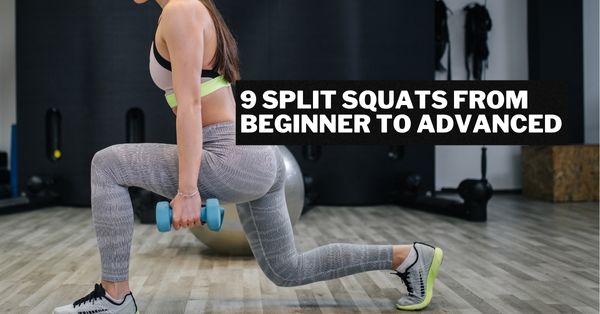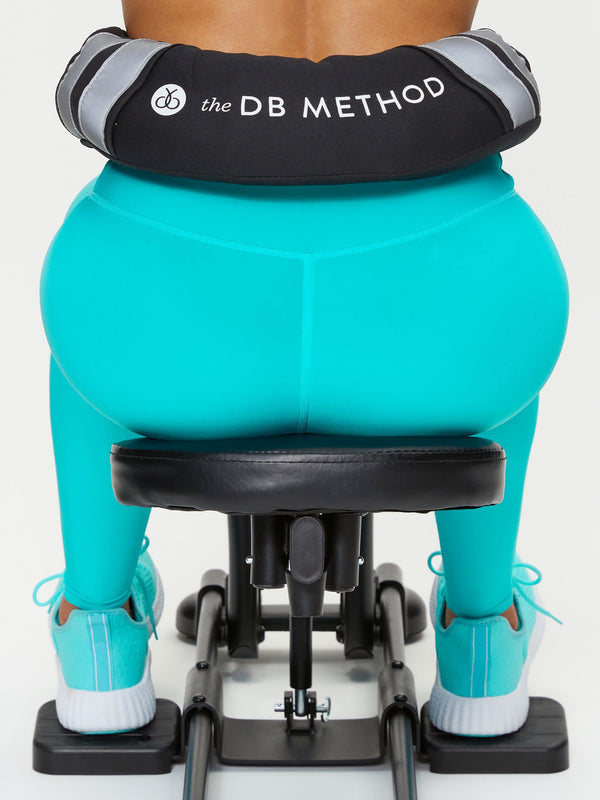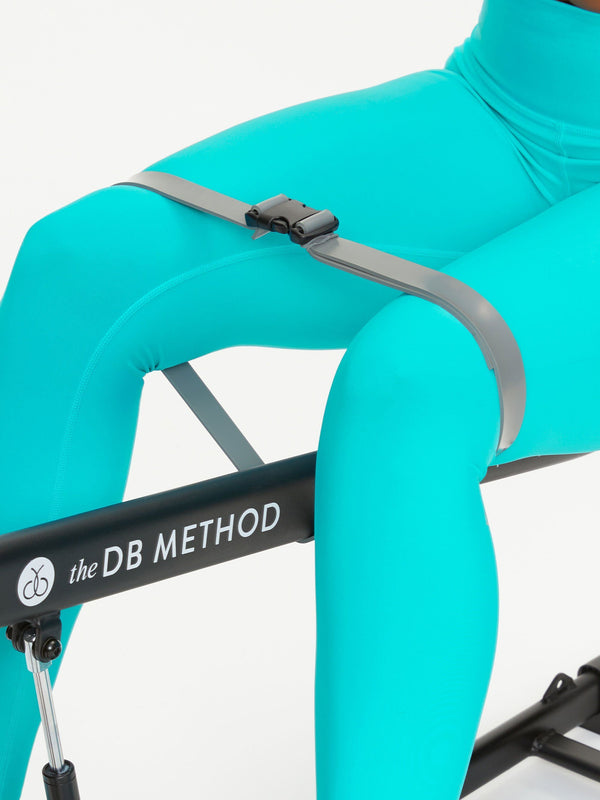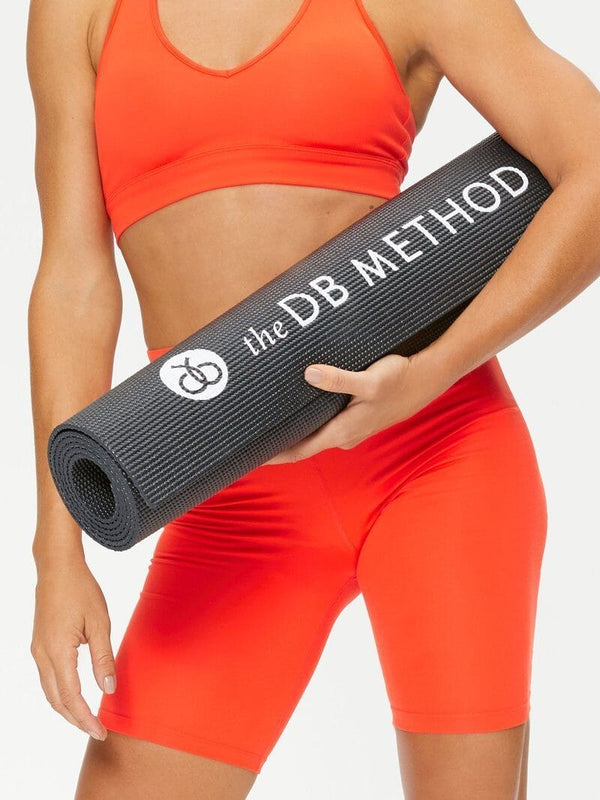Do you enjoy doing split squats but need a little variation in your workout? We get it, and we're here to help by sharing split squat variations for everyone, from beginners to advanced athletes.
The beauty of the split squat is that you can focus on one side of your body at a time, allowing you to identify and work on any muscle imbalances you may have, not to mention take the strain off both knees by reducing tension.
Outside of keeping your exercise routines fun and engaging, modified split squats allow you to hyper-target specific muscle groups to achieve your fitness and athletic goals.
Below you will find:
Beginner Split Squats
Whether you are new to the gym or want a low-intensity adaptation, these split squat variations will do the trick. Each one helps you perfect your form so you can move on to advanced split squat variations.
Assisted Shrimp Squat
Assisted shrimp squats are ideal to add to your workout “aquarium." Because shrimp squats only use one leg, you target your smaller stabilizer muscles, which help to correct muscle imbalances. These squats are perfect for beginners because they allow you to give your legs a helping hand (err…foot).
- Stand with your feet together.
- Transfer your weight onto your right foot while bending your left leg behind you.
- Grab your raised left foot with your left hand. Hold your right arm at your side for balance.
- Bend the knee of your right leg and push your hips back to lower yourself down.
- Pause.
- Grab onto a nearby table, chair, or bench to help assist your legs in lifting your body out of the squat position.
- Press through your right foot to return to your starting position.
Pro-tip: Use a box aerobic step to limit your range of motion at the bottom of the squat if you cannot keep your balance.
Bulgarian Split Squat
Bulgarian split squats are perfect for beginners, because they are easy to learn and require no equipment. They are a great lower body workout that works almost all of your muscles, which in turn burns lots of calories.
- Stand 2-3 feet in front of a sturdy bench or chair with your feet hip-distance apart.
- Pick up your right foot and place it on the bench behind you.
- Bend your left knee and allow your right knee and ankle to naturally bend as you lower yourself.
- Bend slightly forward at your hips and lower yourself down until your left quad is parallel to the ground.
- Push through your left foot to get back to your starting position.
- Step your right foot off the bench.
Pro-tip: Add dumbbells, kettlebells, or a barbell to increase intensity and the impact.
Single-Leg Bench Squat
From building muscle to improving your balance and coordination, single-leg bench squats take you from zero to hero.
These split squats are good for beginners because they allow you to support yourself during the dip. This way, you can keep your balance as your body learns to do a deep squat.
They're a great stepping stone to building the strength you need to do full-range one-leg split squats.
- Stand on your right leg about 6” in front of a box or a chair.
- Lift your left leg just off the ground while extending your arms in front of you.
- Lower yourself down by pushing your hips back until you reach the box or chair.
- Pause, and then push through your right foot to return to the starting position.
Pro-tip: Don’t let the box or chair support all of your weight. While this does make the squat easier, it reduces the effectiveness of the exercise.
Intermediate Split Squats
If you want to challenge yourself without using too much intensity, or if you’re working on your balance and unilateral leg strength, intermediate split squats are for you.
Cycled Split-Squat Jump
Cycled split squat jumps are an excellent modification to enhance your explosive strength, power, and even running performance. It is the perfect split squat variation for new athletes who struggle with landing and cutting maneuvers, or pros at the beginning of training season.
If you play a sport that requires jumping, cutting, and pivoting, these will increase your first step acceleration and explosiveness. Distance runners will even see improvement in their speed as well, due to the leg muscles worked in this split squat.
- With your feet hip-width apart, place your right leg forward and left leg back. Both of your arms should be bent at the elbows. Your left arm should be in front of your body and your right arm behind your body.
- Quickly drive your weight back into your hips and then explosively push both feet into the floor. As you jump into the air, keep your feet level with each other and parallel to the floor.
- While in the air, move your left leg forward in front of your body and your right leg backwards behind your body. As your left leg comes forward, your right arm also comes forward (and as your right leg moves back, your left arm moves back too).
- As you land, your left leg should be in front of your body, your right leg back behind your body, and your lower body should absorb the landing.
Dumbbell Split Squat
Whenever you run, jump, run, and cycle, one leg will be doing more work than the other. By adding dumbbell split squats to your routine, you’ll keep improving your unilateral strength.
Cyclists, runners, and other endurance athletes enjoy the increased muscle mass, strength, and muscular endurance resulting from dumbbell split squats, as these muscle groups help with their sports.
The added weight from the dumbbell split squat also increases your MET number. This means you burn more calories, making it a great option for weight loss.
- Start in a staggered stance holding dumbbells at your sides.
- Bend your front knee to lower into a lunge. Your thigh should be parallel to the ground.
- Hold for 1-2 seconds.
- Drive your heels into the floor, extend your legs, and stand back up into your starting position.
Pro-Tip #1: Elevate your rear foot to improve your stability and balance even more.
Pro-Tip #2: To emphasize your strength and stability, replace the dumbbells with a barbell. The barbell allows you to easily increase the weight and intensity as you move from intermediate to advanced.
Double Kettlebell Front Rack Squat
The double kettlebell rack squat is a fantastic way to build strength and muscle while training your legs, upper back, and core. Yes, these are muscle groups worked by squats when you use the right variations.
By using two kettlebells, you are able to balance the load on both sides of your body, or shift sides if you choose.
The added weight makes these squats good for burning calories, and the balance drills will help with everyday activities, from standing up to getting in and out of your car.
- Stand with your feet hip width apart.
- Clasp your fingers together and rest the kettlebells on the front of your shoulders/upper biceps area.
- Bend your knees and lower yourself into a squat position.
- Push your body away from the floor by squeezing your glutes, quads, and hamstrings to get back to the starting position.
Advanced Split Squats
Need even more of a challenge? While split squats aren’t always the most dynamic movement, that doesn’t mean they can’t get harder! When you’re ready to take your workout to the next level, these split squat variations are ready for you.
Single Leg Squat
Single leg squats tone your legs and glutes while strengthening your core muscles.
This variation of a traditional split squat is especially beneficial for runners because it works the same muscles (hips, hamstrings, quadriceps, gluteus maximus, calves, etc.) that you use in sprints and long distance training.
- Stand on your right foot.
- Lift your left leg out and hold it straight out.
- Push your hips back and lower yourself into a squat position. The goal is to get your hips parallel to the ground.
- Pause.
- Push into your right foot to stand back up.
ATG Split Squat
ATG split squats stretch your ankles, knees, and hip flexors while also building strength in those areas.
They combine the benefits of single leg training while improving your range of motion and mobility. However, the position of the ATG split squat is tough for many people to get into, which is why it’s an advanced modification.
- Start with your right foot out in front of you.
- Slowly lunge down. Your right knee should be as far over your toes as possible while still keeping your torso upright. Your left leg should be close to straight while your front (right) leg’s hamstring should be touching your calf.
- Once you hit the bottom, pause for 1-3 seconds.
- Drive your heels into the floor, extend your legs, and stand back up into your starting position.
Front Foot-Elevated Split Squat
By elevating your front foot, you increase your range of motion, stretching your hamstrings, hips, and glutes even more to improve your mobility and flexibility.
This stretch makes this split squat much harder than traditional ones, and a bit more fun to do.
- Stand with your feet shoulder width apart.
- Take a moderate step forward onto a step with your right foot while keeping your left foot in place.
- Lower yourself to the ground by bending your knees. Continue lowering yourself until right before your back knee touches the ground.
- Push through your right foot to straighten both legs and return to the starting position.
If your body has adjusted to the standard split squat, you want a break from using your squat machine, or you’ve plateaued and need a challenge, the split squat variations above will fine tune your workout to meet your fitness and athletic needs.
And don't forget to join The DB Method community to get more exercise and fitness ideas like these.








